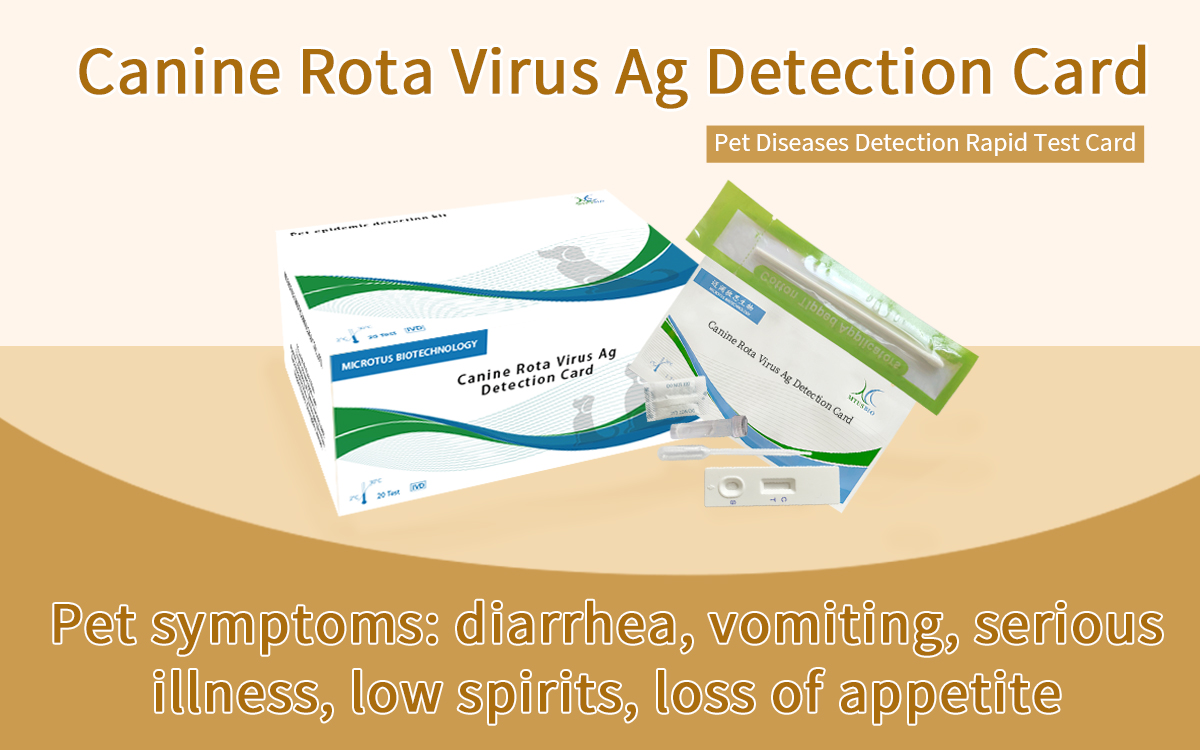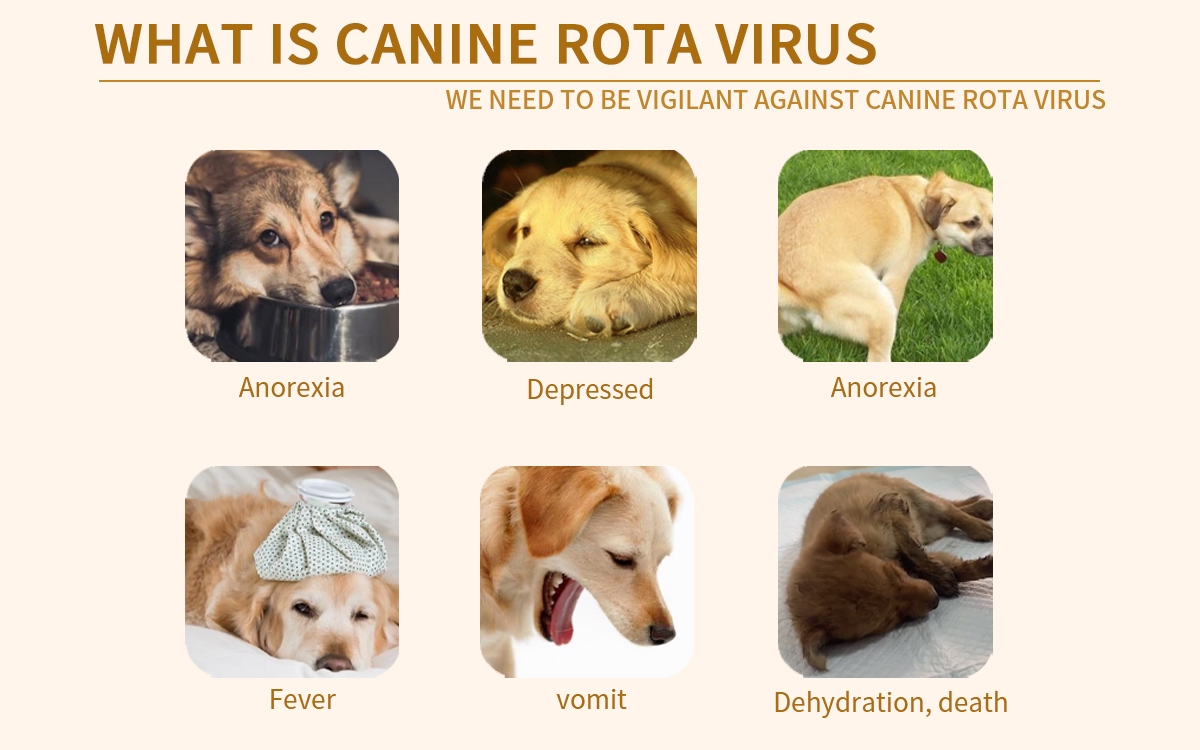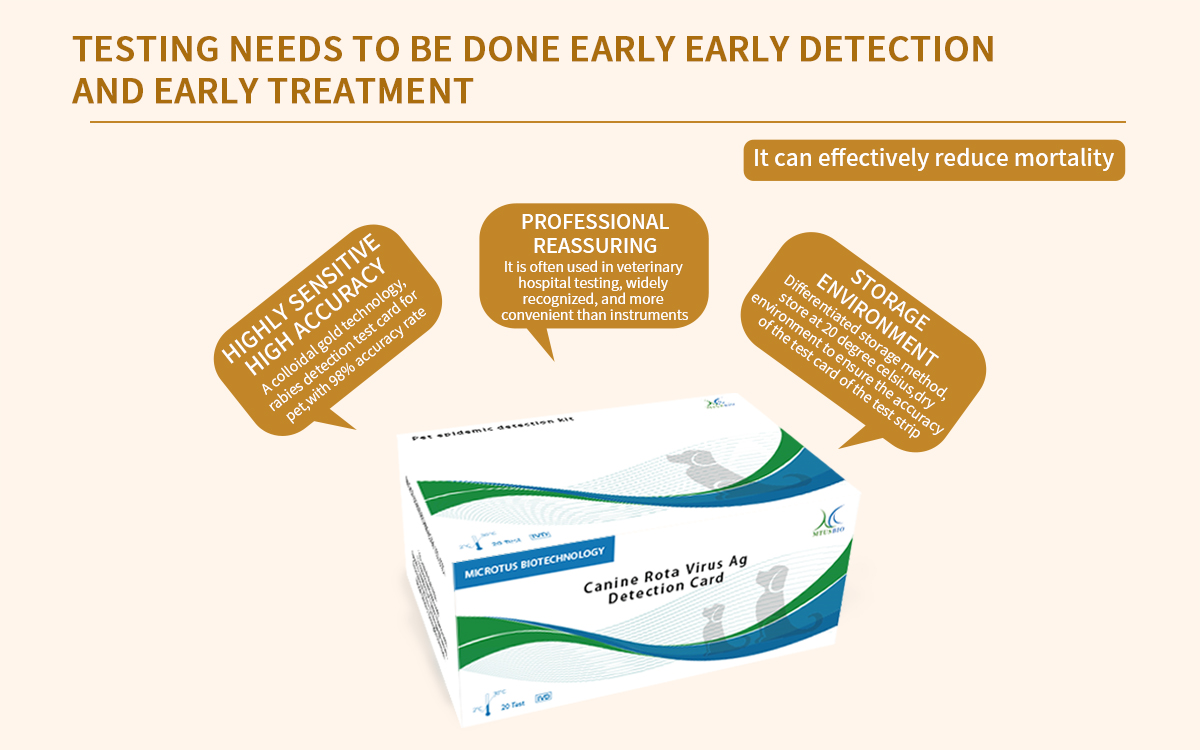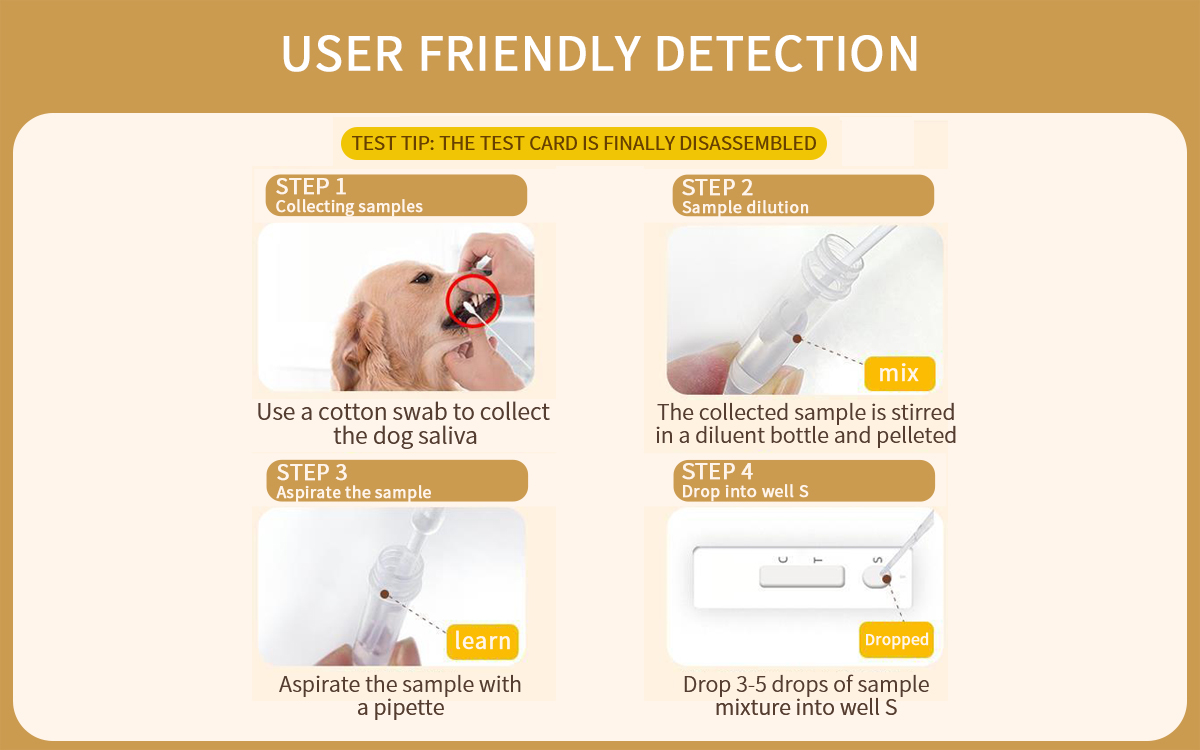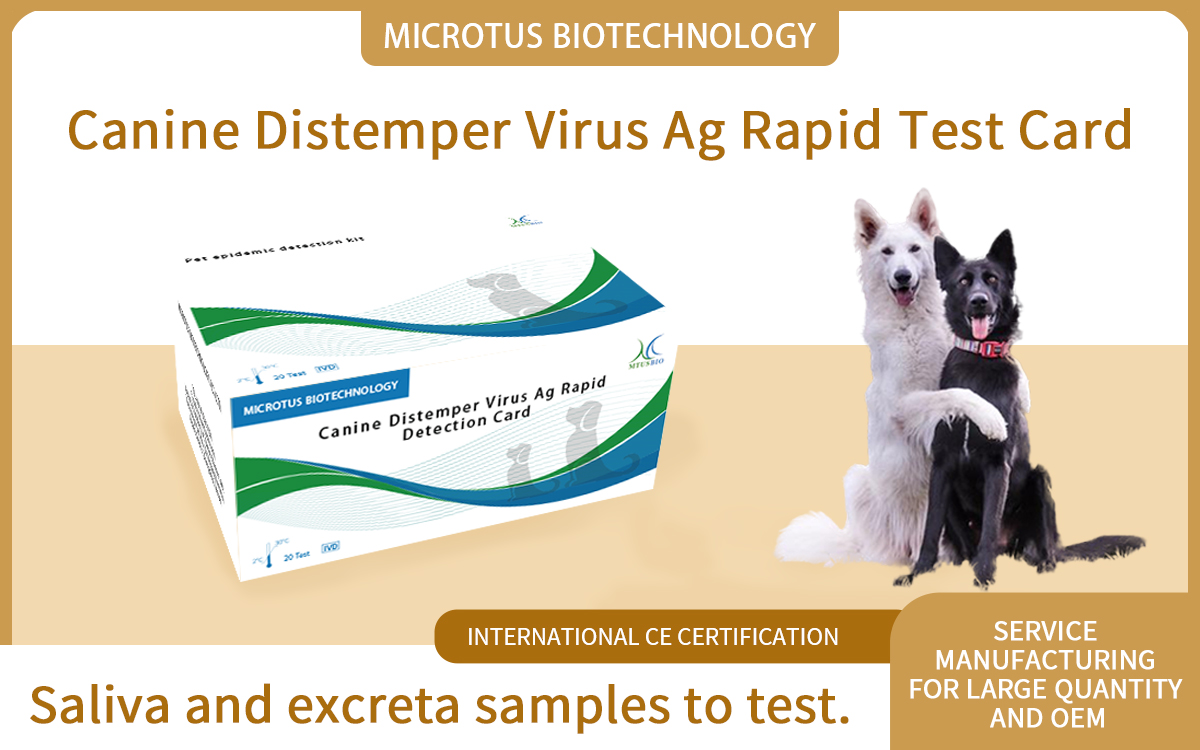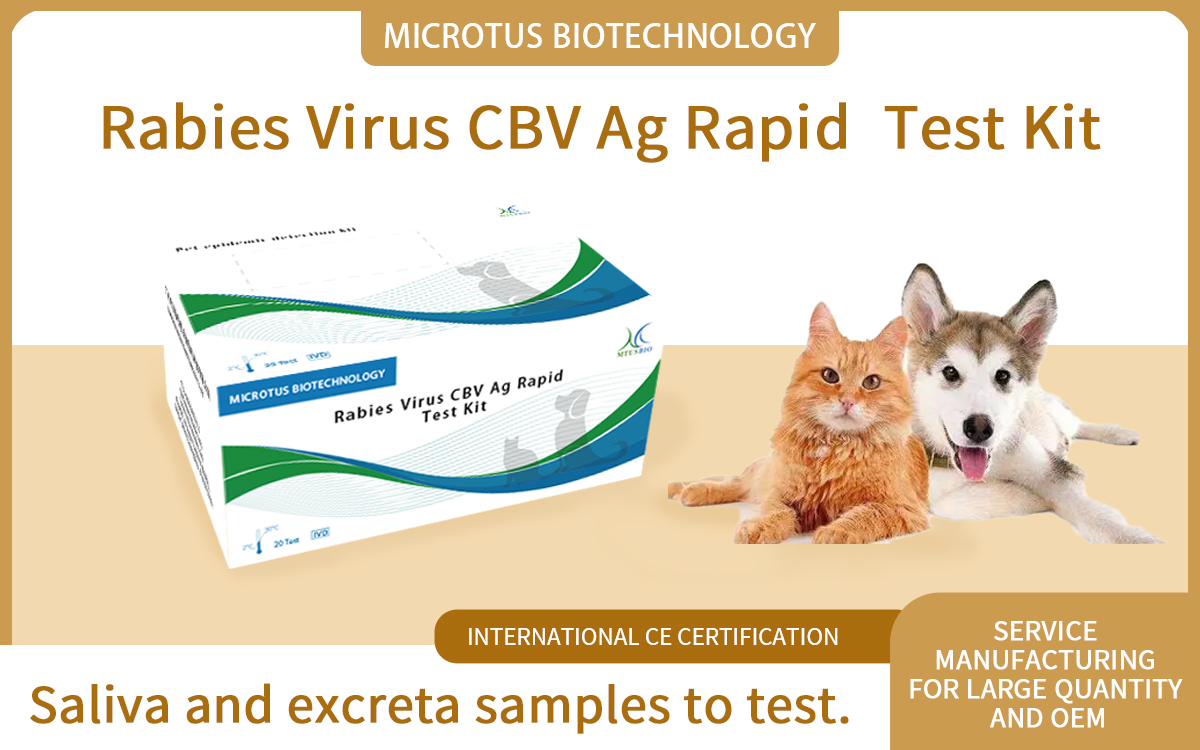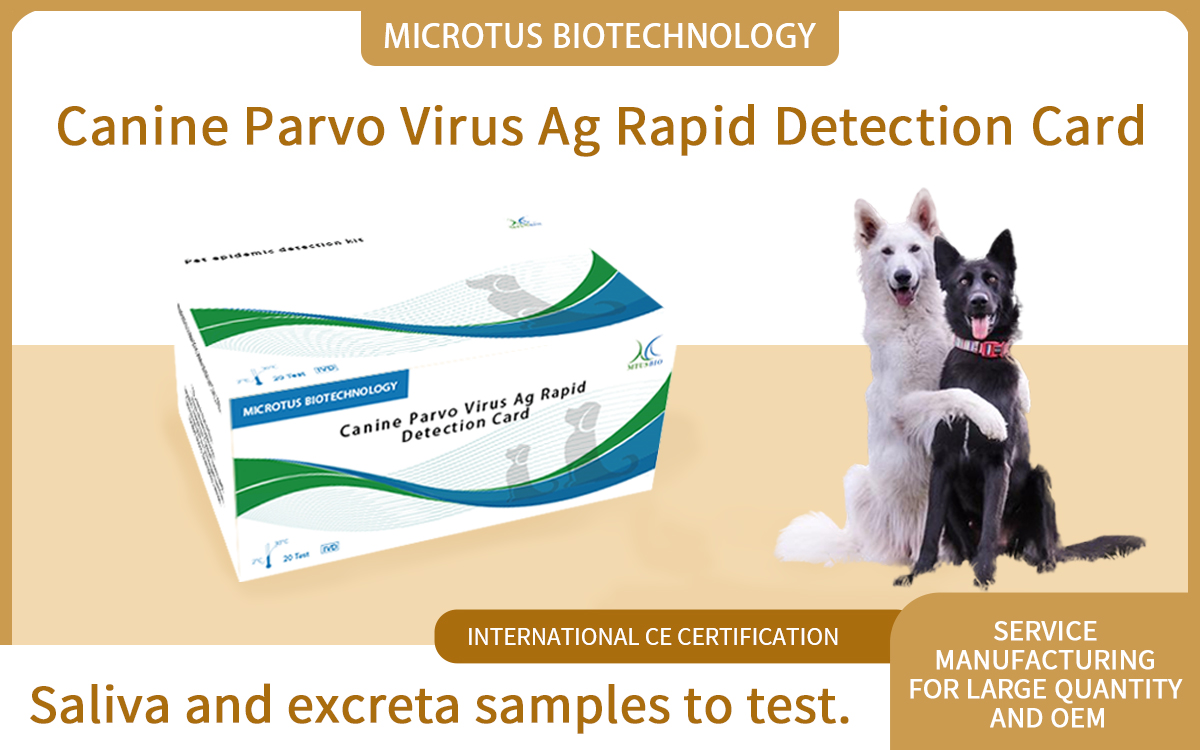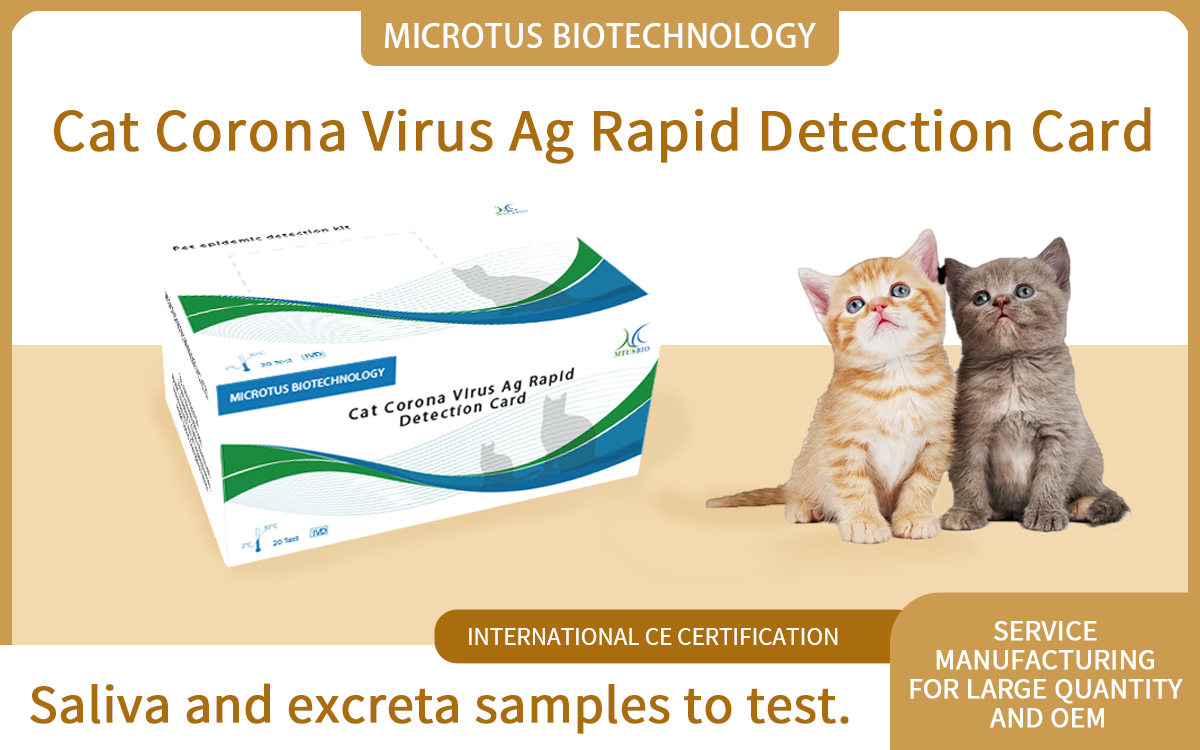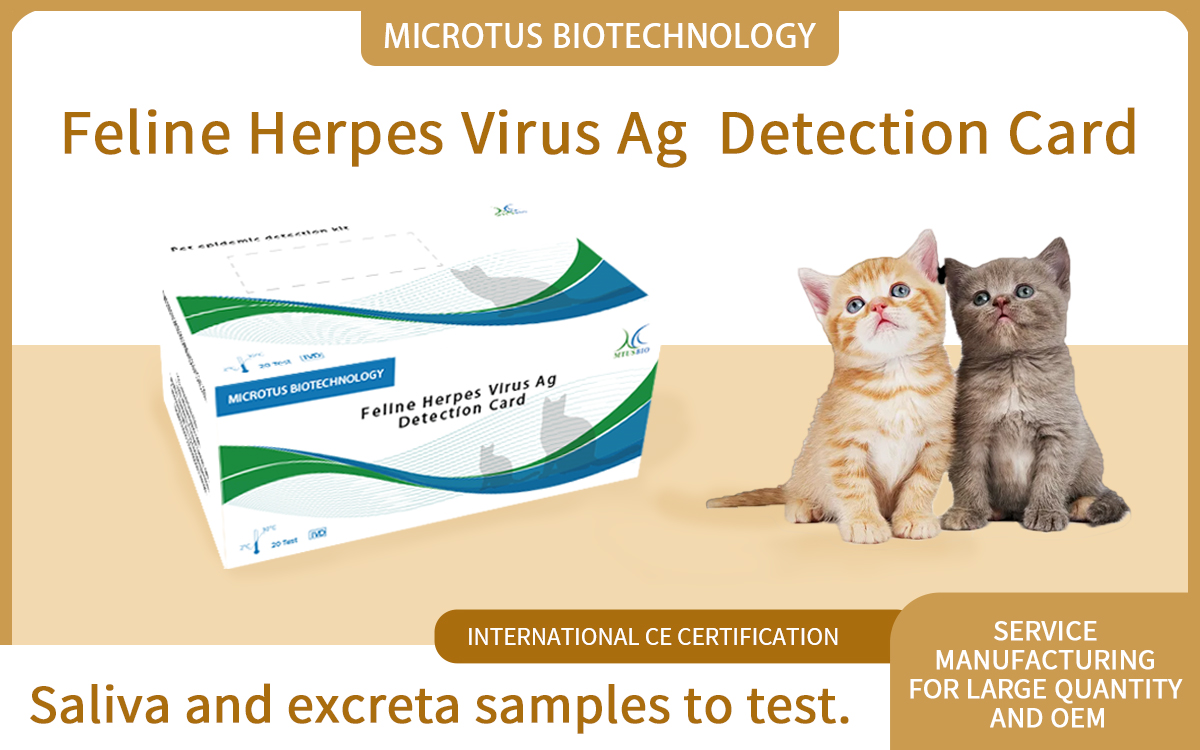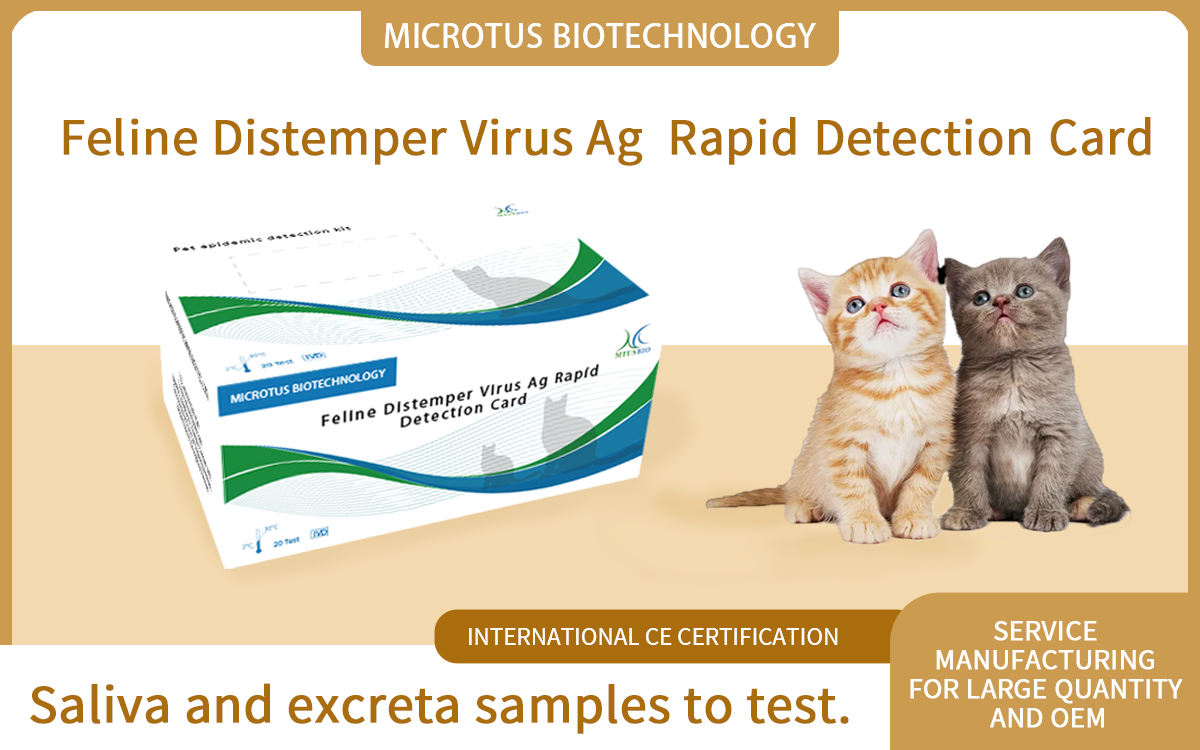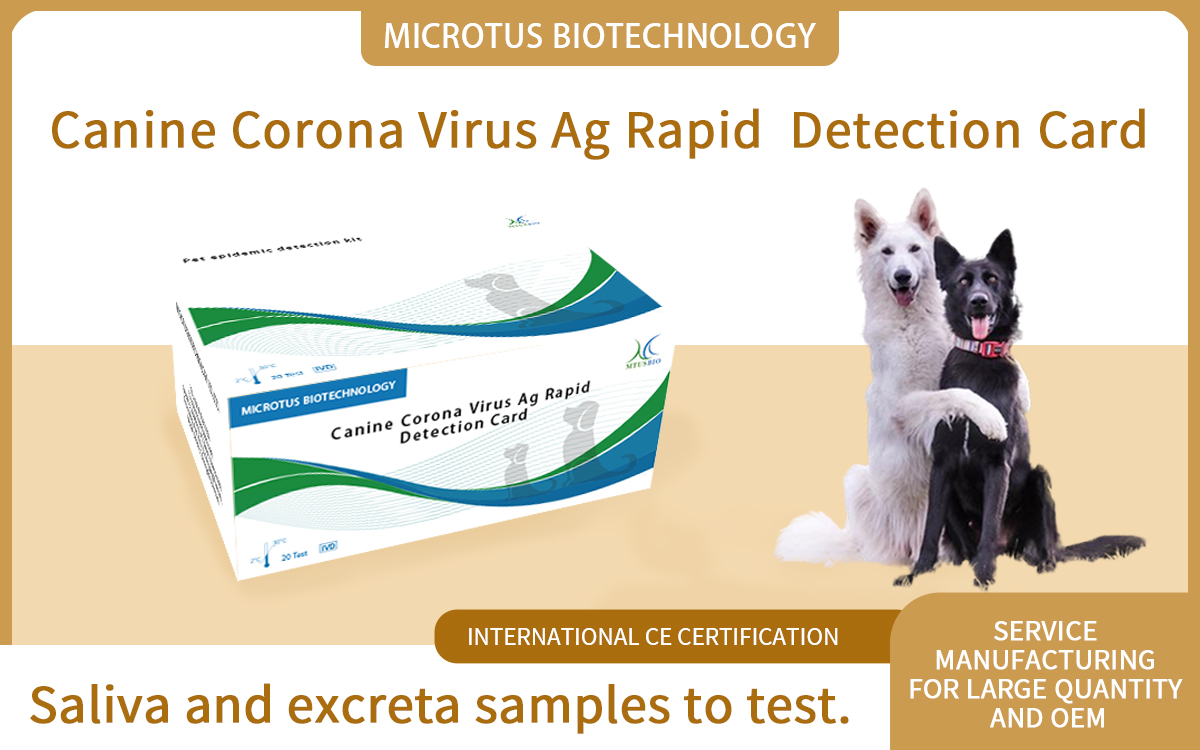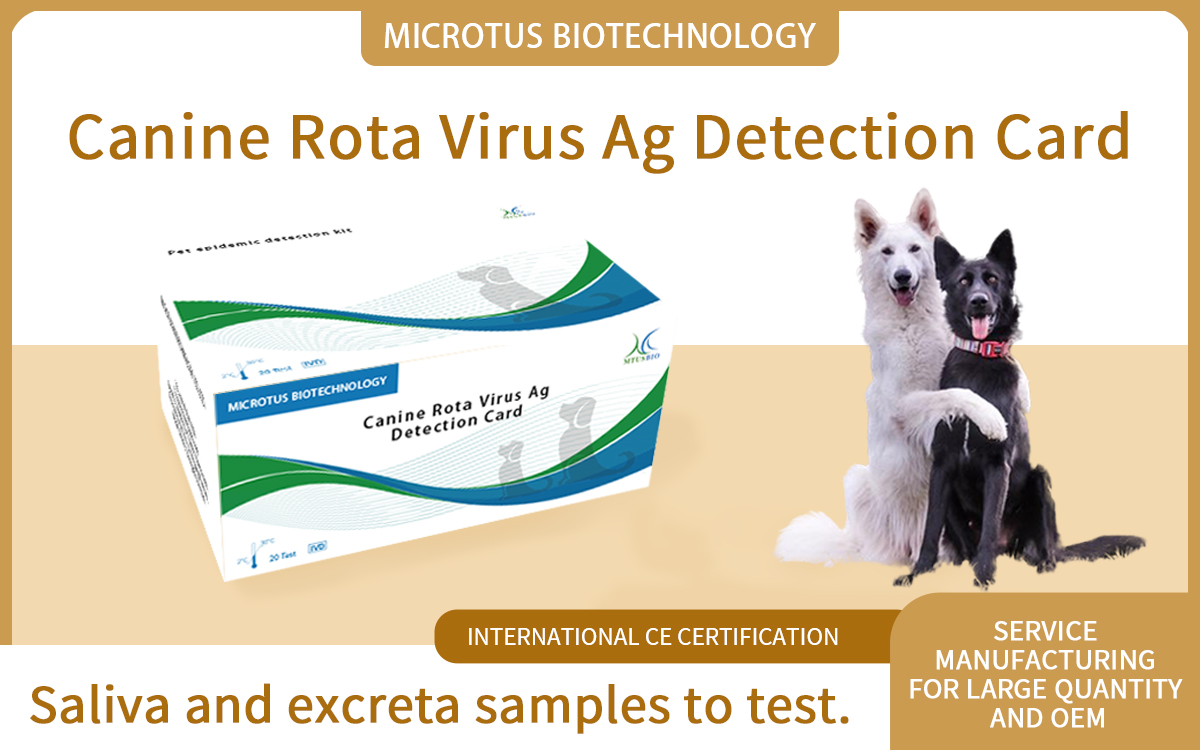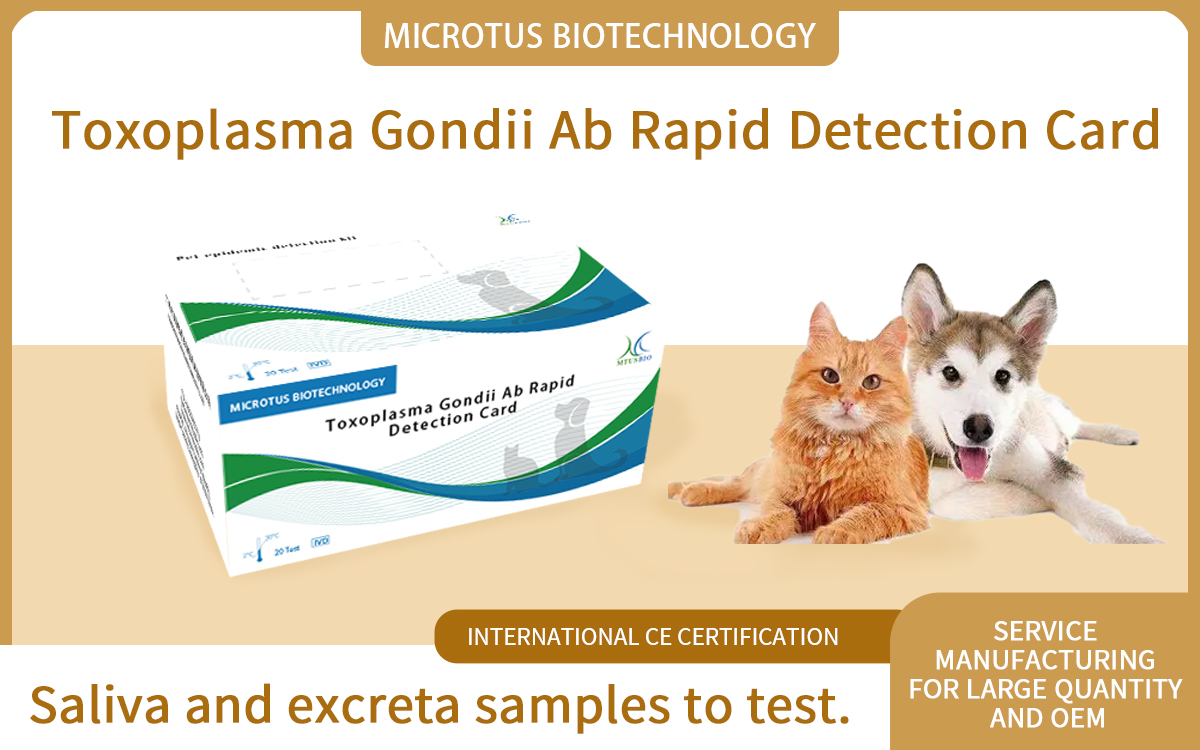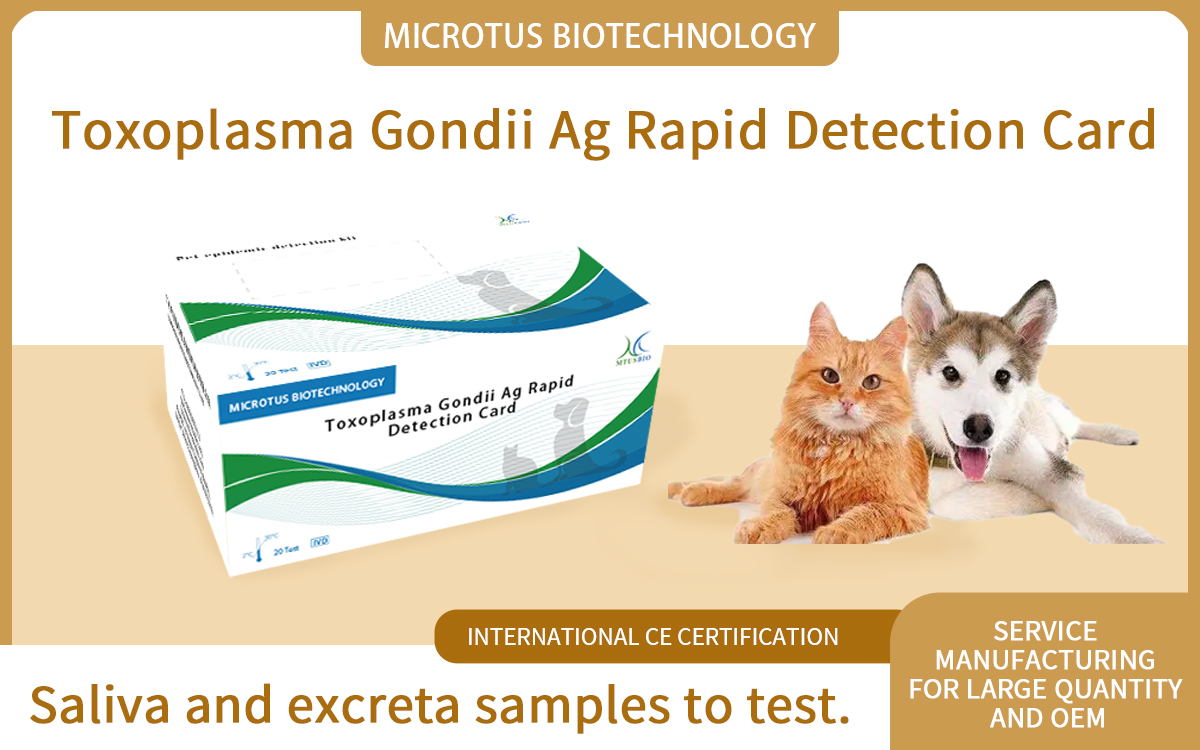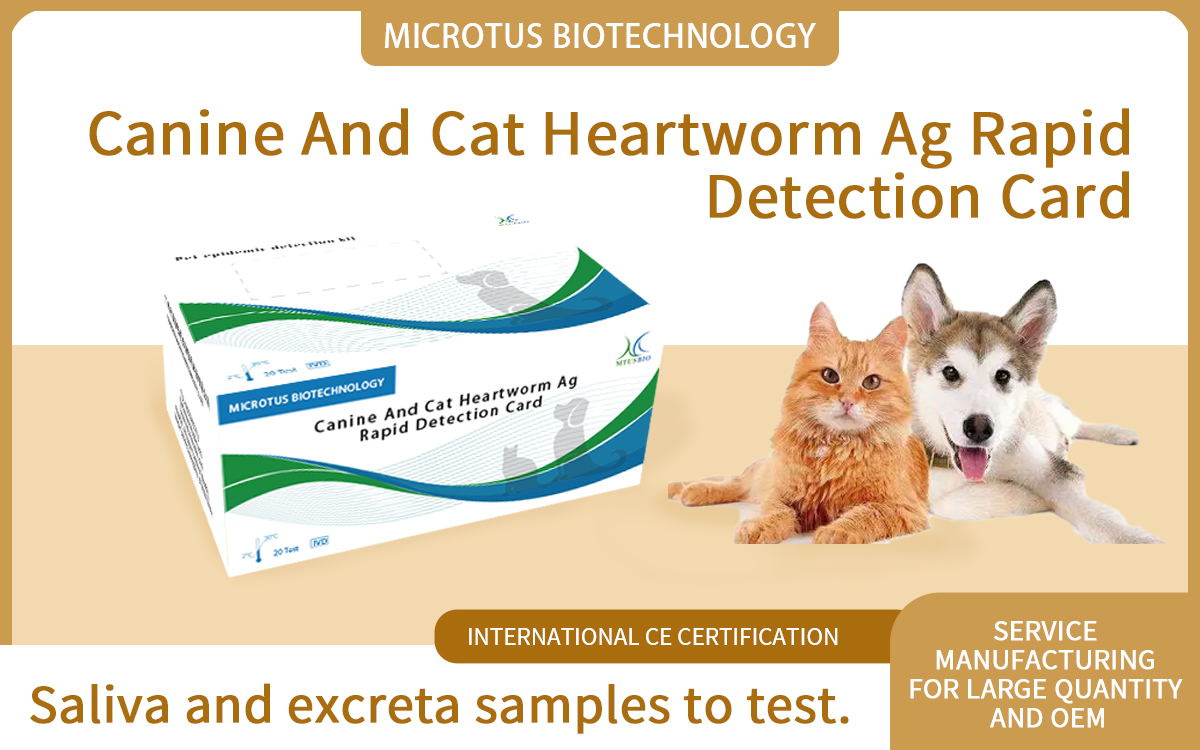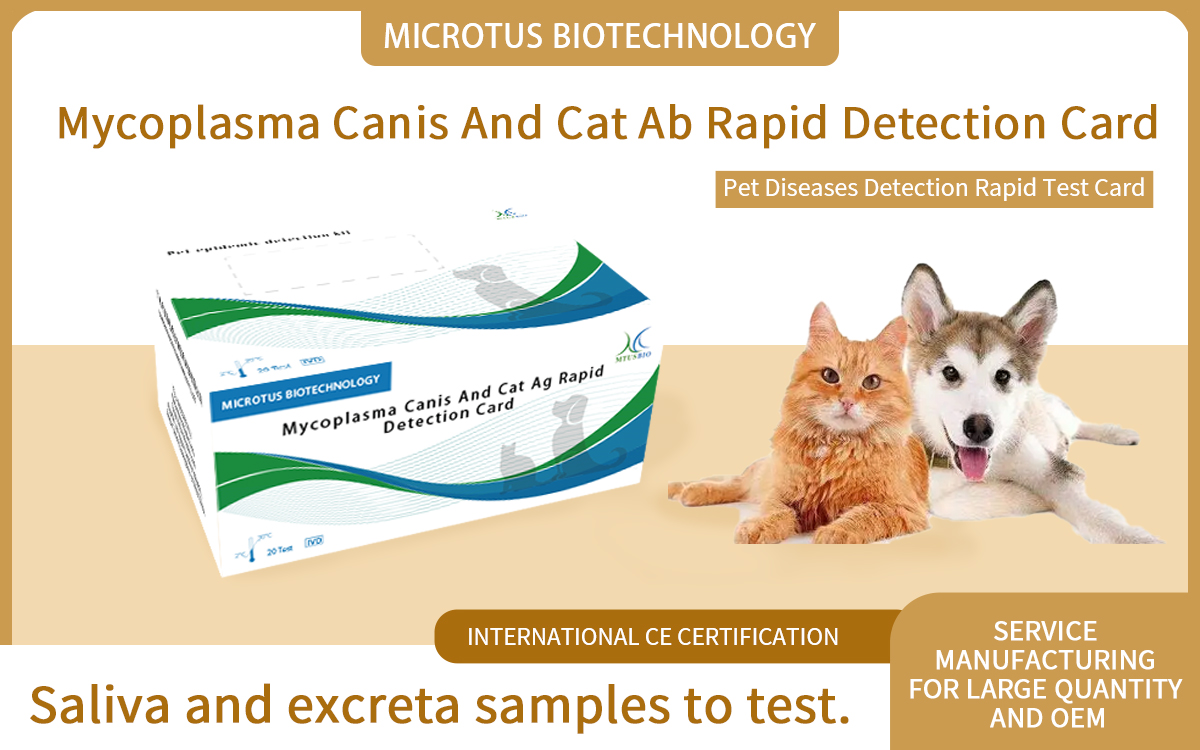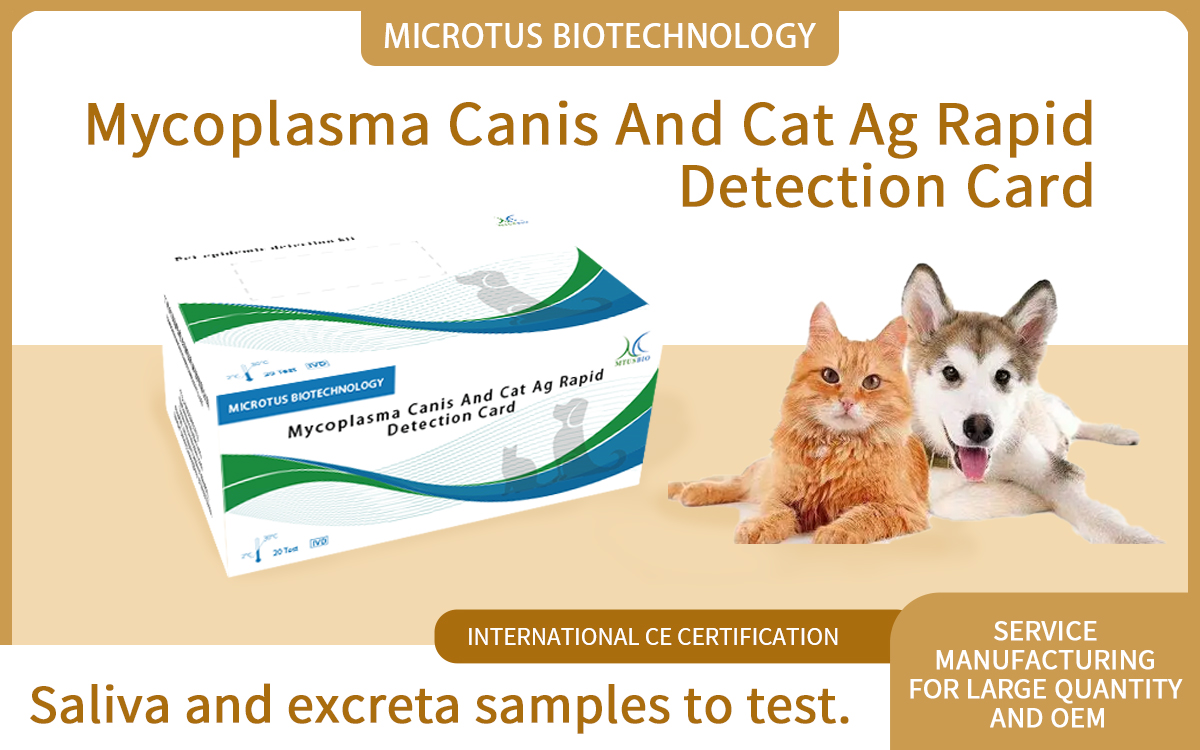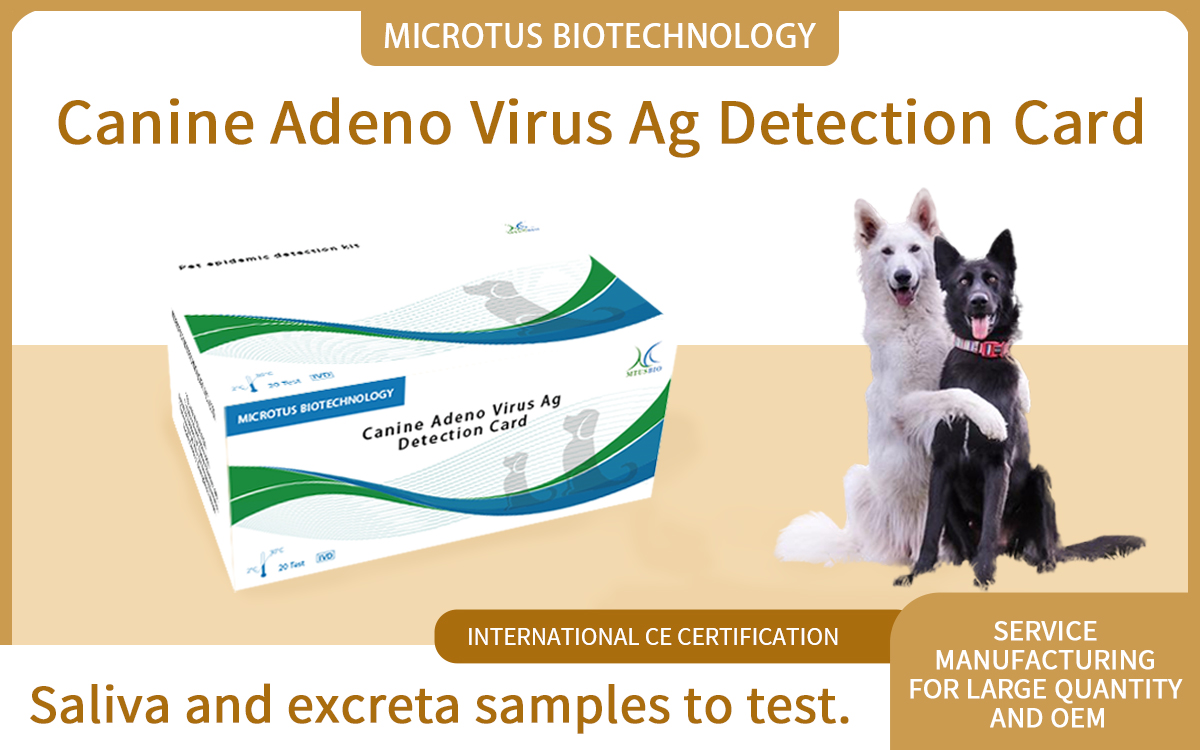[Principle]
This reagent is made by the principle of colloidal gold immunochromatographic test (GICA). After the sample is added to the sample well, it moves along the chromatographic membrane together with the colloidal gold label. Red, if there is no Canine Rota Virus antigen in the sample, no color reaction will occur.
This reagent selects Canine Rota Virus-specific monoclonal antibodies and uses the sandwich method to measure Canine Rota Virus-specific antigens with high sensitivity and specificity. It has been verified that there is no cross-reaction with other common canine viruses such as Canine Rota Virus.
[Kit composition]
No. | Name | 20T / box |
1. | test cards (including straws) | 20 |
2. | Sample dilution | 20bottles |
3. | Cotton swab | 20 sticks |
4. | instruction manual | 1 |
[Storage and expiry date] Store in a cool and dry place (2-30 ° C), valid for 24 months.
[Sample preparation]
After soaking the cotton swab with normal saline, swab the feces, rectum, vomit, and saliva. Immediately insert the cotton swab into the sample tube containing the diluent. Stir the cotton swab thoroughly until all the samples on the cotton swab are dissolved in the diluent. Place the cotton swab in the tube. The wall is squeezed out and discarded, and the sample solution is left to stand.
Note:
Excessive stool samples may lead to erroneous results (such as the occurrence of black bands, etc.), and can be diluted with the sample dilution solution before testing.
【experiment method】
1. Tear off the aluminum foil packaging bag of the test card, remove the test card, and place it on a flat, clean surface.
2. Pipette the prepared clear sample supernatant with a matching pipette, and slowly add 2-3 drops (about 60ul) into the sample well vertically and slowly.
3. Leave at room temperature for 5-10 minutes to judge the results. Results longer than 30 minutes are invalid.














